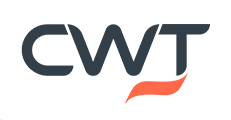In Part One, I looked at the concept of predictive analytics and some common pitfalls. Now I’m going to give you some real-world examples of predictive analytics for travel managers.
Predicting Behavior
This is already being done routinely – Amazon does it to you every time you log in: “people like you bought stuff like this.” Human beings are surprisingly predictable and you can leverage this as a travel manager, using the same techniques.
For example, adherence to travel policy is a function of demographics, job grade and travel experience. It’s not rocket science but when modeled correctly it can generate savings and improve efficiency. You can nudge the naughty – and leave the nice alone.
Compliance is not the only behavioral predictive application – travel preferences, personalized booking experiences and auto-generated predictive itineraries are really not all that different from what Amazon does every day.
Predicting waste
CWT Solutions Group recently conducted a study with over 10,000 respondents. The aim was to understand what constituted a successful trip and therefore work out wasted travel spend. Roughly 12% of all trips are considered failed by the travelers themselves. Why? Mostly bad planning.
- Advance booking: The longer the trip is booked in advance, the less likely it is to fail. A trip booked less than 3 days in advance has a 21% chance of being unsuccessful. This reduces three-fold when booked and planned 15 days in advance.
- Number of meetings: A trip with only one meeting produces an unsatisfactory result 19% of the time. If you want a rule-of-thumb, every additional meeting in a trip reduces the probability of an unsuccessful trip by about 10%.
- Time spent in meetings: In 38% of the unsuccessful trips, the cumulative meeting time was four hours or less. When that’s an hour or less, the probability of an unsuccessful trip is 28%.
Predictive models for trip success (and spend value) can be incorporated into the trip approval process by looking at the above three factors. Simply insisting that each trip consists of at least two meetings and has at least 4 hours of total meeting time can cut wasted travel by over a quarter, creating significant savings.
Predicting Spend
Here, the key is to understand how travel expense correlates with the business itself. Don’t assume next year will be like this year. Moreover, different parts of the business will respond to changes in the business environment and performance differently than others. And you want your predictions to be in line with business planning.
To do this, you need to identify the key performance indicators for the business, correlate those with travel expense in each cost center, and get a prediction on those KPIs.
To make this work, you need historical data with matching expenditure. As for the KPIs, management types routinely come up with those to run the business. Right or wrong, it’s best to use those KPIs because, regardless of what actually happens, your planning will be in synch with business planning across the organization. If you work for a large organization, you can repeat this for each unit.
Again, not rocket science – very transparent and easily explained. Travel expenditure is a function of business activity. All businesses generate KPI forecasts for planning purposes and there is no reason not to use those. What I am advocating here is to be smart about it – leverage the fact that different parts of the business will respond differently to business change. Use historical data and some statistical modeling to understand those relationships better so your own expenditure forecasts are more accurate.
The bottom line: there are some smart ways you can apply predictive analytics to corporate travel. The key is to be realistic about what you’re predicting and ensuring you have the right technical skills in your team. There is no mystery to predictive analytics. People do it all the time. You should, too.
Blog Author: Eric Tyree, Chief Data Scientist, Carlson Wagonlit Travel


